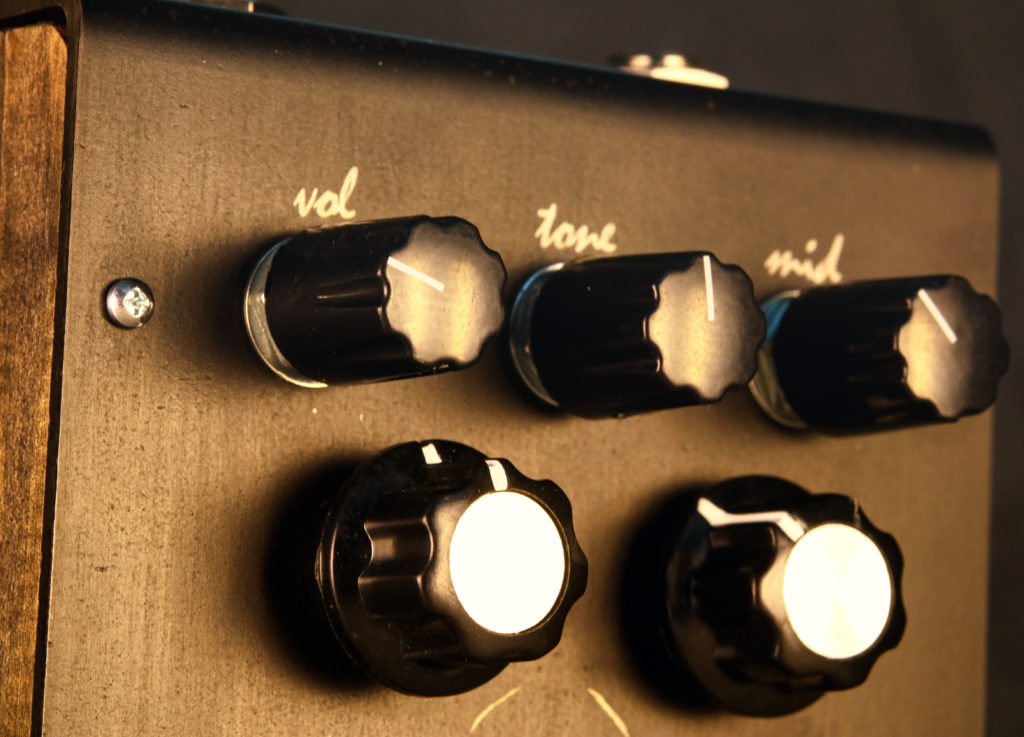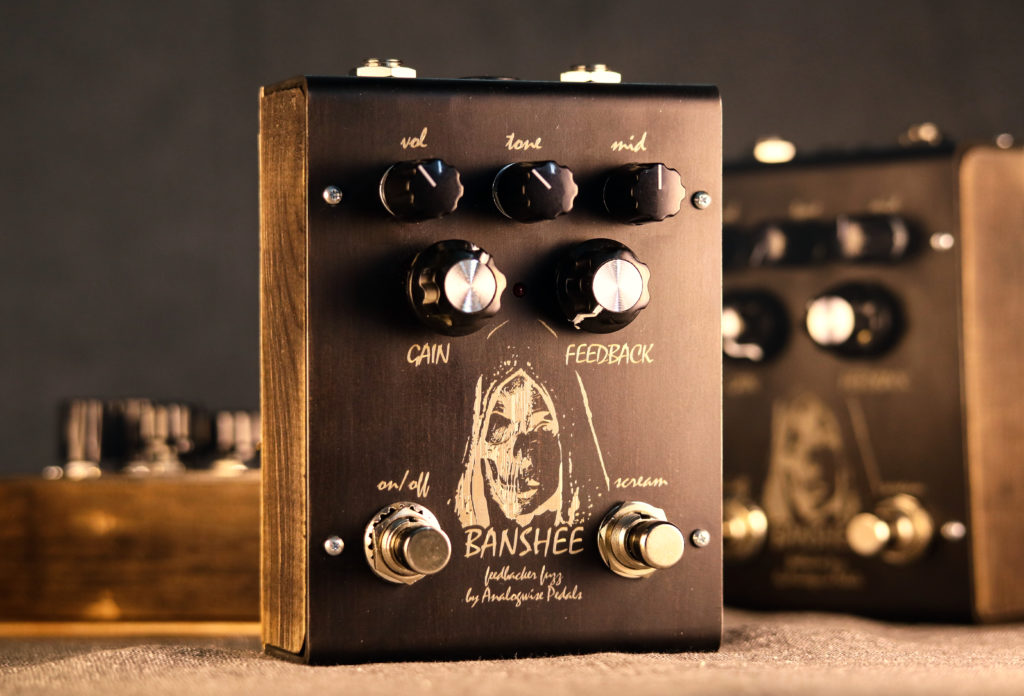Banshee

“Jaysus!”
– everyone at the show
Scary. It’s plain scary.
You’re looking at a fuzz pedal that’s very unique. One-third silicon, two-thirds germanium, extremely loud and super gainy, it also has sustainer / feedbacker funcionality, letting you create whole new sonic landscapes. Dystopian and crumbling landscapes, true, but still… new landscpes. That’s good, right? Right.
Here are its most prominent features:
- SUPER LOUD. Don’t set the volume and gain knobs to noon before you plug it it for the first time. For real.
- Super gainy, too. Dime that gain knob, press that feedback footswitch and enjoy infinite feedback. Well, almost infinite.
- True bypass – won’t suck your tone when turned off.
- Requires a standard power adapter. Boss-style, centre-negative, 9V. Feel free to use 12 volts if you’re feeling adventurous. Be prepared for some more noise, though.
Need more details? Read on.
Banshee is a feedbacker fuzz. Meaning – by the press of a button, you send some of its output signal back to one of the earlier stages. How much of that signal gets sent depends on the position of the “feedback” knob. Now, the signal being fed back is already affected by what you do to it with the “gain”, “mid” and “tone” controls – so adjusting those knobs will also have an impact on what happens when you press that feedback footswitch. Depending on the settings, the pedal wil uphold the last note you fed it, and will later start crumbling into 8-bit, sputtery chaos.
The pedal is quite a vicious animal. It’s very loud and very gainy. That means – some noise will be present at higher volumes. If you set your volume to unity, it should not be a problem.
Circuit-wise, it’s built with three gain stages. The first one is made with a modern, high gain silicon transistor. The apmplified signal is then fed to two consecutive stages, sporting vintage, NOS, mojo-laced germanium transistors as their hearts. That’s where the magic happens.
Tone control is another thing that Banshee does differently from most of its fuzzy brethren out there. Turning the knob to one side cuts the high-end and boosts the bass. Turning it in the opposite direcction results in cutting the bass and pushing more treble out. It also has a separate midrange control to fine-tune your tone. Now, what’s different is – the tone control circuit is placed after the second gain stage – feeding the filtered signal to the last stage. That allows you to decide which frequencies get amplified and fuzzed out, rather than simply filtering the already overdriven signal.
The pedal is hand-made top to bottom. The top plate is made out of carbon steel, turned black by the process called “rust bluing”. A fascinating process in its own right. In short: cowboy era technology, baby! The black layer is quite resilient to scratches, but you can treat it with a wipe of a slightly oliy rag from time to time. This will restore the depth of the black finish. Avoid cleaning it with rough chemicals or water baths. You know, baths, electric equipment, bad.
The sides are made out of solid wood – and not just any store-bought lumber, but dumpster rescuees. Instead of allowing them to rot in landfill, I cut them in pieces and made pedal enclosures. That means there might be some dings or even holes in your pedal! That doesn’t mean you received a beat-up unit somebody else had abandoned. That’s not a bug, that’s a feature! The sides will quite enjoy some oil or wax on them from time to time, too! Will restore that slight shimmer.
Here’s a demo video. Do note that the demo depicts an early prototype – in an enclosure of old type and without the midrange control.







or place an order here:
